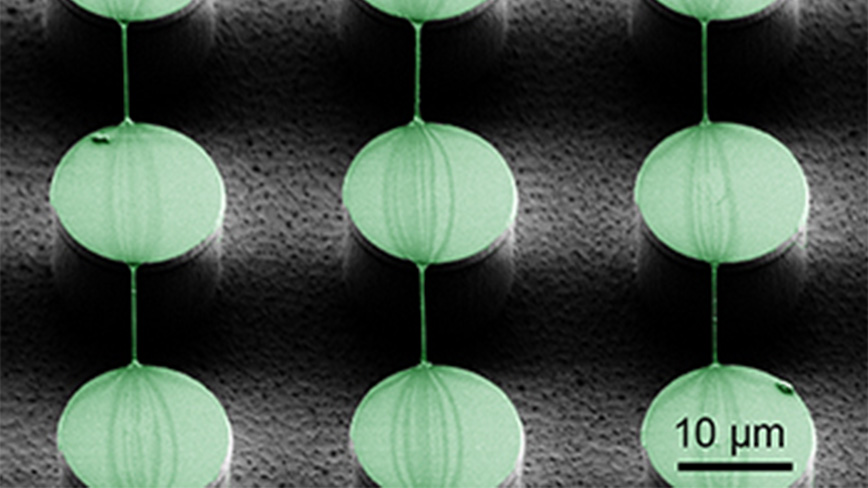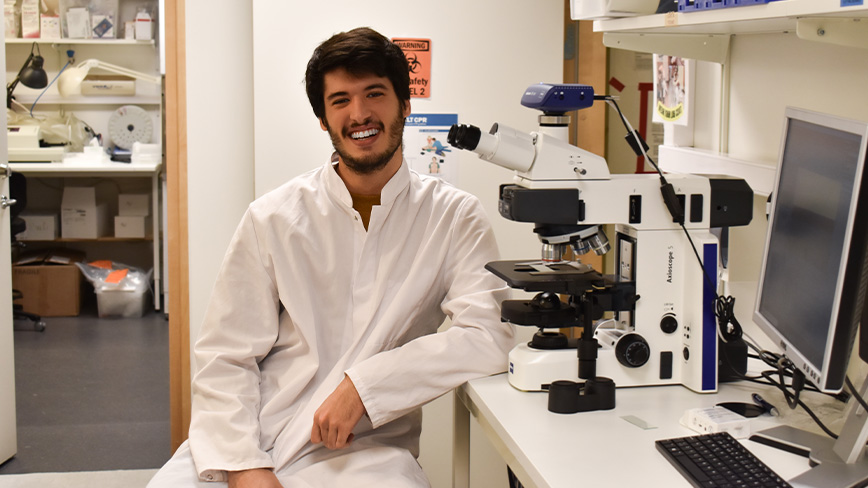Scalable Production of Spider Silk Nanowires

Researchers from KTH have successfully up-scaled the process for producing and releasing spider silk nanowires. They used liquid bridge-induced assembly to create over 12 million of 10 μm long nanowires suspended in solution in about 20 minutes. The nanowires can easily be functionalized by both pre-and post-formation and are successfully used to support cell adhesion as well as integrated into 3D cell aggregates.
”If the nanowires were to be functionalized with antiseptics and used to coat implants the potential benefit to society would be a possible reduction in implant rejections and associated infections,” says Linnea Gustafsson, visiting researcher at KTH.

Researchers from the division of Micro and Nanosystems (EECS) and the Protein Engineering Division (CBH) have collaborated to produce these results. The spider silk nanowires are produced on a micropatterned surface, and the researchers have previously theorized that they could be used for sensing applications while still suspended on the surface. (https://doi.org/10.1002/adma.201704325) However, with this new work, the researchers have shown that they can easily functionalize and release the nanowires from the substrate. A wide range of new applications thus becomes available.
“The nanowires could, for example, be used to coat surfaces of implants. Functionalizing the nanowires with a cell adhesion motif would allow cells to populate the surface more easily. Infections could be hampered by further functionalizing the nanowires with, for example, drugs or antibiotics. Along the same lines, by incorporating drugs into the nanowires, they could also be used for drug delivery, where their elongated shape would allow them to reach, for example, solid tumours,” says Linnea Gustafsson.
Must be scalable
According to her, the production of spider silk nanowires must be scalable, as it makes it possible to produce enough nanowires for the intended applications. Since the wires are small (30 um long, 200 nm wide), a lot of them are needed to coat an entire surface.
The collaboration between the two research teams at EECS and CBH has worked very well and will continue.
“Bringing our different competencies together allows us to approach problems in new ways, so the collaboration is ongoing and will continue. Since we first discovered the ability to produce spider silk nanowires in 2018, other projects, such as the formation and usability of spider silk nanomembranes have come a long, and that is where we will focus our continued work together.” says Linnea Gustafsson.
Publication: Scalable Production of Monodisperse Bioactive Spider Silk Nanowires in Macro Molecular Bioscience.
For more information, please contact Linnea Gustafsson lingusta@kth.se.
Text: Jon Lindhe
Related news

Scalable Production of Spider Silk Nanowires
Researchers from KTH have successfully up-scaled the process for producing and releasing spider silk nanowires. They used liquid bridge-induced assembly to create over 12 million of 10 μm long nanowir...
Read the article
Reducing global misuse of antibiotics with digital dipsticks
Antibiotic resistance is one of the biggest threats to global health today, but we still overtreat many infections with antibiotics—urinary tract infections being one of the most common. A digital dip...
Read the article
Earlier diagnosis of cancer with Lucky Loop
If you have a cyst, you want the doctor to be able to tell you how severe it is. But until now, this has been more complex than it sounds. The new start-up Lucky Loop will help diagnose pancreatic can...
Read the article